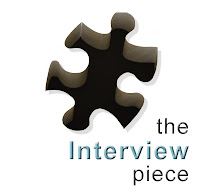 Jigsaw puzzles often have large sections of background—sky or grass or trees—with lots of similar pieces. Books have background pieces too: documents, descriptions of locations and sites, newspaper articles, community events and gatherings, awards and commendations given to key characters, family/company/team photos, newsletters, correspondence, organization minutes, advertisements. The list goes on and on.
Jigsaw puzzles often have large sections of background—sky or grass or trees—with lots of similar pieces. Books have background pieces too: documents, descriptions of locations and sites, newspaper articles, community events and gatherings, awards and commendations given to key characters, family/company/team photos, newsletters, correspondence, organization minutes, advertisements. The list goes on and on. There are several ways to document these. The simplest way is to photograph them, but they can also be read aloud and recorded for later transcription or merely copied by hand. If you have access to a scanner, images can be scanned directly into your computer. Organize them with color-coded flags just like the transcript quotations.
So now you have lots of little piles of color-coded pieces that you want to assemble. And the whole thing is going to seem disjointed unless you smooth out the narrative with what I call “bridges.” These are sections of text that move readers from one topic or speaker to the next.
Quotations from different people about the same topic should fit together as if all the interviewees were in the same room when you talked to them. This is usually not too difficult to do.
But bridging between topics can be a little trickier, requiring some kind of segue way. Usually background information can be inserted to set the scene and take the reader from one topic to the next. But sometimes the transition may not be easily accomplished, in which case you need to interrupt the text with a visual break such as an asterisk line or white space. For very abrupt topic changes, a complete chapter break is necessary.
This is where you need the advice of an outside, independent, experienced editor.
A quick word about editors: they are your BEST FRIENDS. Rule of thumb: ALWAYS TAKE THEIR ADVICE.
For any writer, allowing someone else to work on your beloved manuscript (your BABY!)…well, it can sometimes be super-intimidating. And it’s hard at first not to internalize their suggestions as personal criticism. Another rule of thumb: YOU’LL GET OVER IT.
Remember, editors are as eager and enthusiastic as you are to see the final manuscript go to press and be well-received. They are your allies, not your enemies. So embrace—yes, embrace!—their comments (and them too—they like that). Even when they change what you think are your most clever passages. Even when they seem to be way too fond of their red pen (or font, as the case may be). I’ve found that in the end, they always make me look like a far better writer than I am—praise God for that!
Next week: collaborating and writing for someone else.




